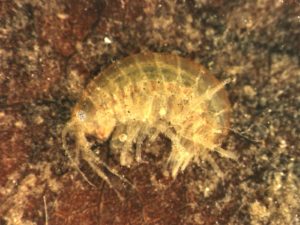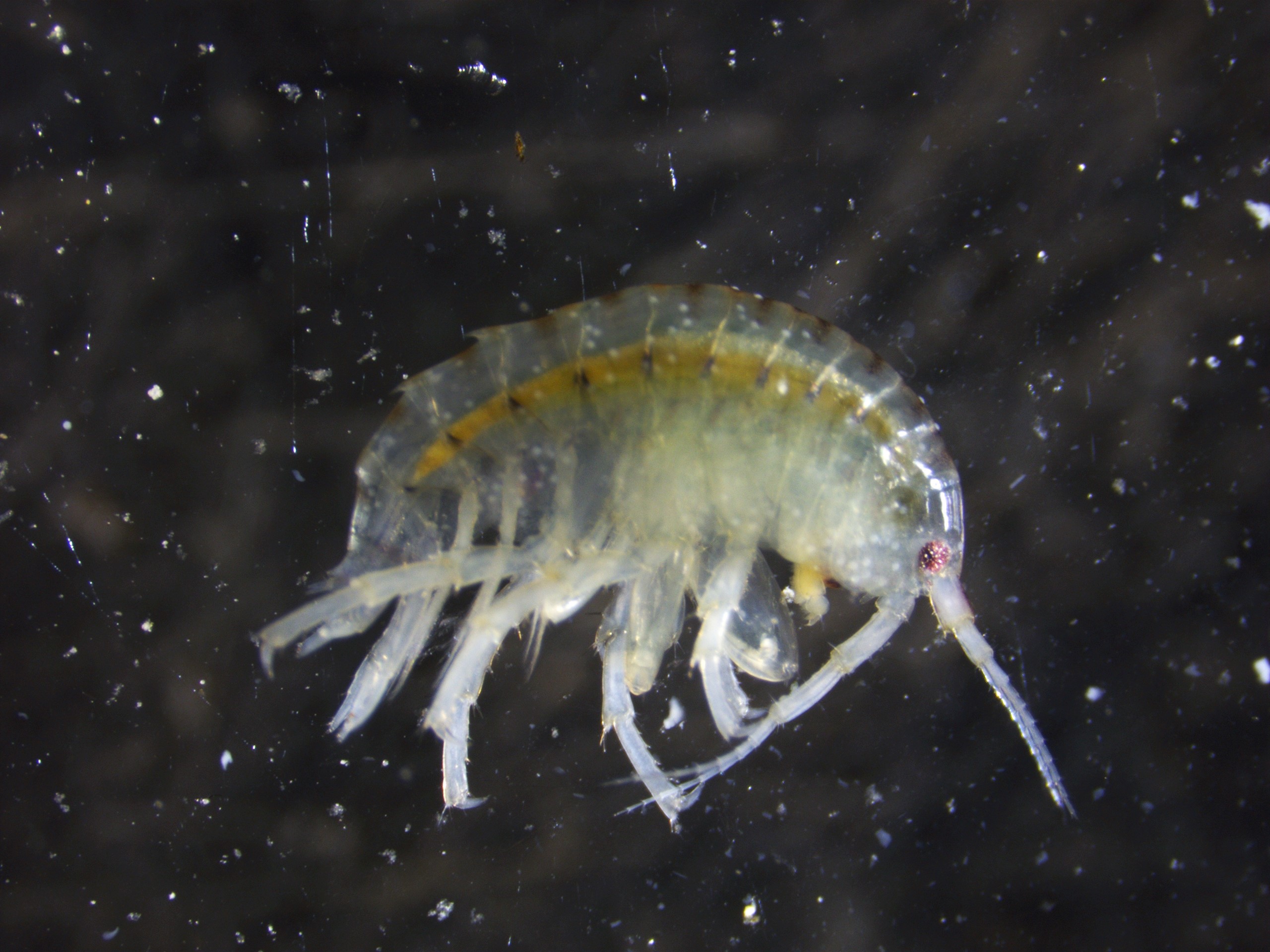Photo by Matt Hill (EcoAnalysts, Inc.) of one of our male scuds.
This is the first in a series of blogs about finally getting some of our hatchery’s invertebrates identified. You might want to read this blog for background:
https://goliadfarms.com/maybe-i-can-get-some-invertebrates-identified-finally/
This blog concerns our Gammarus or scuds. In case you didn’t take time to read the above background blog, I’m going to plagiarize myself and copy part of the above blog that is about our scuds.
“We’ve raised scuds for just over 10 years now. We got our start from Dr. Caitlin Gabor of Texas State University in San Marcos, Texas. Dr. Gabor studies mate selection in mollies, primarily using the Amazon Molly, Poecilia formosa, an all-female species (see my blog for more information about this fish: https://goliadfarms.com/poecilia-formosa-amazon-molly/. I placed them in a vat and they quickly colonized the entire system, hitchhiking on plants, nets, and water. Our fish loved them, but it soon became apparent we could without much effort raise a lot more than we could use. We started to sell them to retail customers.
“Today, we ship scuds every week across the country, despite not knowing the scientific name of our scuds. We simply call them “Gammarus sp.” Gammarus for one of the larger genera of scuds and “sp.” for “species.” Many of them have gone to universities, and when shipping to universities, I always ask to have them keyed out. I really want to know what species we are raising. So far, despite promises, we have not gotten them identified. I’m hoping Anndrea’s group can change that.”
For those interested in a bit more information about scuds, including culturing instructions, here’s a blog I wrote about them:
https://goliadfarms.com/shop/gammarus-scuds/
So, anyway, we shipped some scuds to my nephew’s girlfriend Anndrea who works for EcoAnalysts, Inc. (see https://www.ecoanalysts.com/) in Moscow, Idaho.
Anndrea’s coworker, Matt Hill, promptly identified them, writing:
“Your package arrived in good condition today, and I got a chance to look at the scuds. They are Hyalella azteca Complex. Hyalella azteca was first described from a cistern in Vera Cruz, Mexico in 1858. The original description was not very precise, and the name Hyalella azteca was put on populations of scuds across North America for the next 150 years. Recent work by taxonomists suggests that “true” Hyalella azteca is only found in Vera Cruz, and all of the other populations across North and Central America probably represent a complex of dozens of very similar and closely related species. Until taxonomists untangle the mess (it will probably take decades), we just call any scud that matches the description of Hyalella azteca by the name “Hyalella azteca Cmplx”. Those that wish to be more concise will just call it Hyalella sp. I took a picture of one of the mature males with my microscope, I’ve attached it to this email.” (See photo at top of blog.)
Matt also attached this photo of a scud he said was “…of a specimen from our local population (Paradise Creek) of Hyalella azteca Complex.”

I told Matt that Dr. Gabor had collected mollies in Mexico and maybe, just maybe, that’s where she got the scuds.
Matt responded excitedly (taxonomist nerds are very excitable about certain things), “Yes, please let me know where the Hyalella came from. That would be really cool if you had THE Hyalella azteca!”
Alas, it wasn’t to be. When I asked Dr. Gabor the source of her scuds, she wrote back, “I think they came with the Java moss so then it came from the Stock center but I don’t know where theirs came from. We still have tons and can’t get rid of them.”
The “Stock center” she referred to is the Xiphophorus Genetic Stock Center (https://www.xiphophorus.txstate.edu/) at Texas State University, Dr. Gabor’s school. Here’s a link to an article I wrote for Tropical Fish Hobbyist magazine about the Center: http://www.tfhmagazine.com/details/articles/the-xiphophorus-genetic-stock-center.htm.
Not to be stymied, I emailed Markita Savage at the Stock Center. Unfortunately, she didn’t know where they originated either.
So, until Hyalella azteca Complex is sorted out by taxonomists, we’ll go with that name for our scuds.


michael noel says
I love your blog, and it made me excited to know you were working with a company right across the state line from me.
Charles Clapsaddle says
Michael,
Thank you. I have nothing but good things to say about them.
Charles